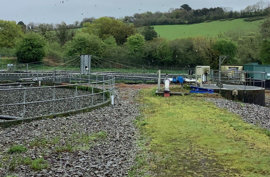Using biodiversity net gain to shape long-term planning and achieve business and sustainability outcomes
Published: 20 February 2025
Biodiversity net gain legislation launched in February 2024. The legislation requires a minimum 10% increase in biodiversity value and that projects are monitored for minimum of 30 years to ensure development projects contribute positively to the natural environment.
Alongside the impact on long-term asset planning and investment, there are a number of creative opportunities to use biodiversity net gain and the corresponding Welsh approach of net biodiversity benefit as a springboard to achieve wider business and sustainability outcomes.

Using feasibility studies to enhance biodiversity and habitat management
Conducting comprehensive biodiversity net gain feasibility studies is crucial for identifying opportunities and constraints to enhance biodiversity and implement effective habitat management strategies.
These studies involve baseline habitat and condition assessments of existing land holdings, which inform the development of targeted recommendations for biodiversity improvements or highlight constraints. By understanding the current ecological value of a site, developers can design interventions that meet regulatory requirements and promote sustainable habitat management.
Impact on long-term planning and cyclical industry programmes
The integration of biodiversity net gain into planning processes has significant implications for long-term development strategies and cyclical industry programmes, such as price reviews in the water sector.
Local planning authorities are encouraged to embed biodiversity net gain requirements into local planning processes and site allocations, ensuring that biodiversity considerations are central to development decisions. This proactive approach facilitates better alignment between development objectives and environmental sustainability, informing land use and investment needs over extended planning horizons.
Implementing nature-based solutions to meet biodiversity goals
Nature-based solutions offer effective means to achieve biodiversity net gain targets while providing additional environmental and social benefits.
By leveraging natural processes and ecosystems, nature-based solutions can enhance biodiversity, improve climate resilience, and deliver ecosystem services such as air quality improvement and recreational spaces. For instance, restoring mangrove forests not only boosts biodiversity but also enhances coastal protection and supports local livelihoods.
Ensuring climate resilience in blue-green infrastructure
As climate change alters local microclimates, it’s essential to assess the impacts on blue-green infrastructure and select species that will remain resilient under changing conditions.
Incorporating climate resilience into green stormwater infrastructure design involves selecting plant species and designing systems that can withstand anticipated climate impacts, such as increased temperatures and altered precipitation patterns. This approach ensures that biodiversity enhancements are sustainable and continue to provide ecological benefits in the face of climate change. This approach can also help to achieve biodiversity net gain targets.
An integrated approach to development and environmental stewardship
One year since its implementation, the UK's biodiversity net gain legislation has prompted a more integrated approach to development and environmental stewardship.
By conducting thorough feasibility studies, aligning long-term planning with biodiversity objectives, implementing nature-based solutions, and ensuring climate resilience, stakeholders can achieve meaningful biodiversity gains that support ecological integrity and societal wellbeing.
For more information about how we can help you meet your biodiversity net gain challenges, see here.
You might also be interested in
 Case study
Case studyEnhancing biodiversity through baseline biodiversity net gain assessments for South West Water
 Case study
Case studyConducting biodiversity net gain feasibility assessments at 6 UK sites for the British Pipeline Agency
 Insights
InsightsDemystifying the new biodiversity net gain legislation
 Insights
InsightsGuide to biodiversity net gain for development and land management
Environmental compliance today, creating a sustainable tomorrow
Helping you reduce risk to the environment and your operation by managing assets compliantly while achieving commercial, ESG, and net-zero goals.
Contact our experts

